Diesel Exhaust Fluid
Understanding how to Deal with DEF
Article Date: December, 2018
Article and Photography by Mark Quasius
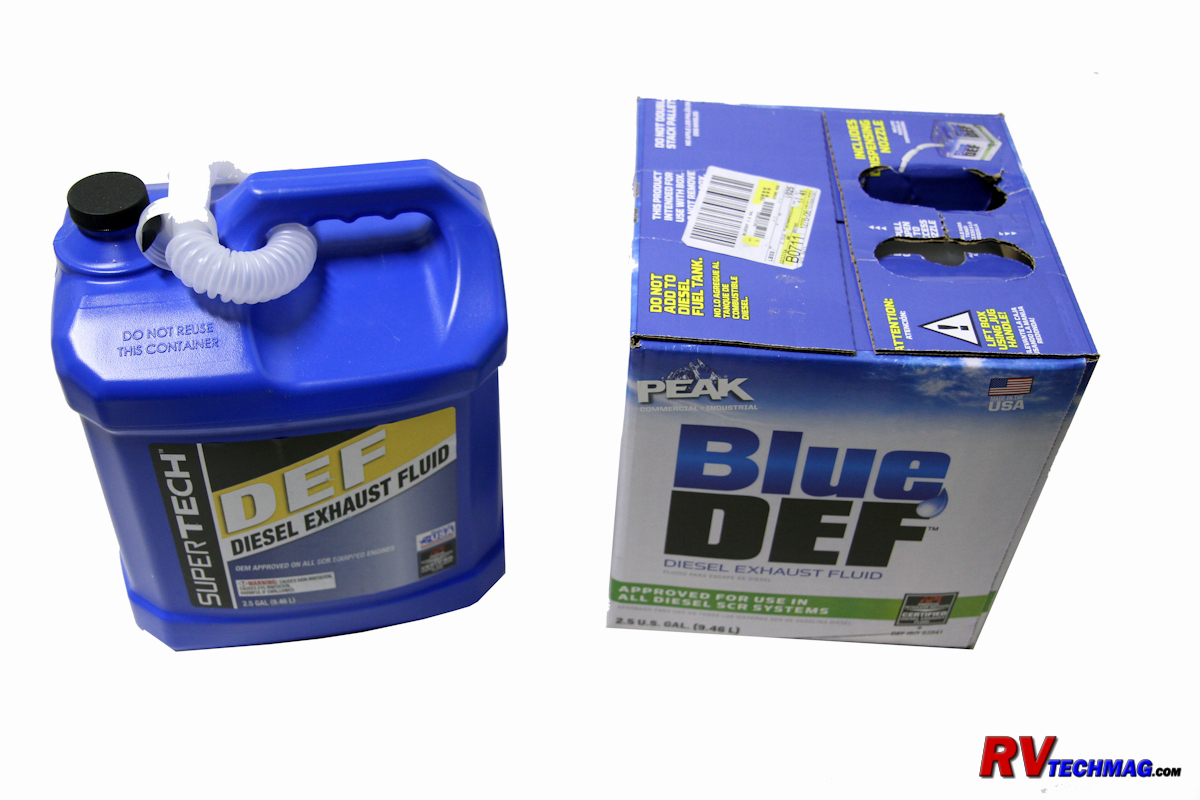
Ever stringent reductions in heavy duty diesel engine emissions have been mandated by the EPA in recent years. The first big
change was the use of Diesel Particulate Filters (DPF) in the EPA-2007 regulations. This required the use of Ultra Low Sulfur (ULSD) Diesel fuel to prevent
damaging the costly DPF. The reduction in emissions was noticeable but he biggest change was in the EPA-2010 specs which required even more stringent
limits on emissions. While some engine manufacturers attempted to use advanced Exhaust Gas Recirculation as a method, these efforts caused more heat related
problems and just didn't work out very well. Cummins decided to implement a Selective Catalytic Reduction (SCR) system, which continued the use of the DPF
but added a second component, the SCR, to the system. This system has resulted in significant gains in reducing emissions and resulted in greatly improved
air quality.
The SCR system adds a decomposition reactor after the Diesel Particulate Filter. Diesel Exhaust Fluid (DEF) is injected into the
exhaust stream where it forms ammonia vapor. This vapor flows along with the Nitrogen Oxides (NOX) in the exhaust as they enter the next chamber, which is the
SCR catalyst, where they react together to form harmless water vapor and nitrogen. The end result is that the emissions are at near-zero levels. By performing
this emissions treatment in the exhaust, rather than in the engine, it allows the engine manufacturer to tune their engines for maximum performance, fuel
efficiency and reliability. The only drawback is that owner now needs to add DEF to the system on a regular basis and care for the DEF in the proper manner.
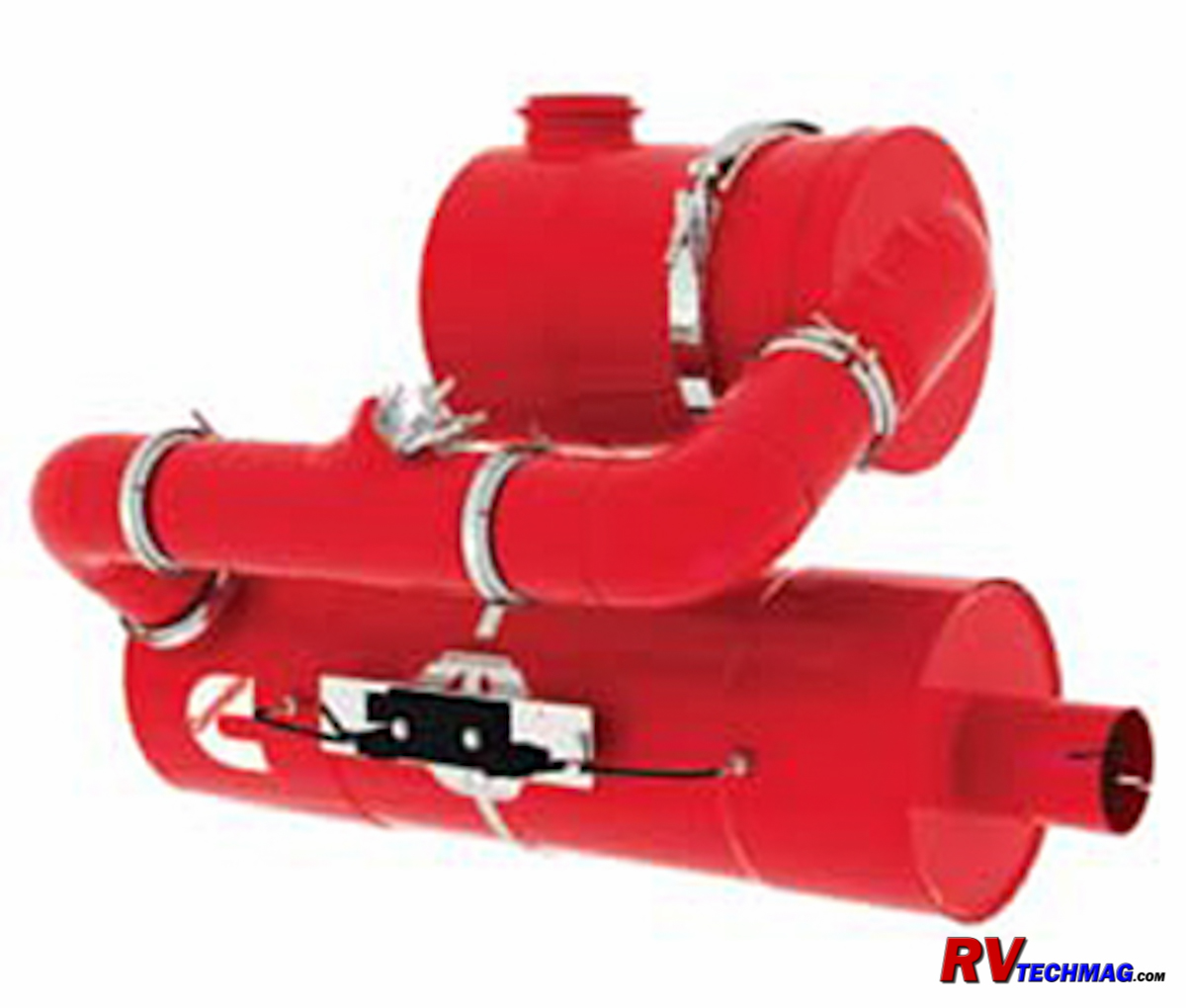
The Cummins aftertreatment system utilizes SCR
emisions technology to achieve reduced emissions levels
What Is DEF?
Diesel Exhaust Fluid, commonly referred to as DEF, is designed specifically for use in diesel engine emissions systems. It's a
non-hazardous mixture of 32.5% urea (ammonia) and 67.5% water. DEF systems are picky so don't even think about mixing up your own stuff with some household
ammonia. If you mess up your emissions system there can be some significant repair bills looming in your future. There is no good-better-best DEF. All DEF is
rated by the American Petroleum Institute (API) who rate engine oils and other lubricants. DEF isn't all that complicated so any DEF the carries the API certified label on their packaging will be just fine. Feel free to shop for the best price and availability but just be sure it has the API label on the
container.
DEF production is governed by the ISO 22241 standard to ensure that the DEF has an exact 32.5% content of ammonia. This ratio was
selected because it offers the lowest possible freezing temperature of DEF, which is 12 degrees Fahrenheit. Strict tolerances are also placed on impurities,
which can damage injectors and catalysts. The quality of the urea is also monitored and urea such as used in fertilizer is not allowed plus only distilled
or deionized water may be used. Even the DEF containers are regulated by the ISO standard because DEF is corrosive to carbon steel, copper and aluminum so
these containers may not be used.
How Much DEF Will I Use?
Numerous sources make statements as to what your DEF usage will be but the fact is that it will vary. One common statement is that
DEF will equal 2% of your fuel usage but this is a generalization. A lighter RV with a smaller engine that is driven more leisurely may consume as low as
1.5% while as heavier coach with a large 15 liter diesel engine that is driven more spiritly may have a DEF consumption ratio as high as 4% of the fuel rate.
Let's assume that your motorhome does burn DEF at a 2% rate. If your coach has a 150 gallon fuel tank, has fuel economy of 6 MPG and a DEF tank capacity of
13 gallons your DEF will need to be refilled once for every four fuel tank refills - even longer if you top off your fuel tank more often with letting it get
too low. So DEF usage isn't big concern. There is a cost to buying DEF but it's not significant and the latest SCR equipped engines that use DEF generally
have a slight improvement in fuel economy so cost-wise it's pretty much a wash.
Handling DEF
|
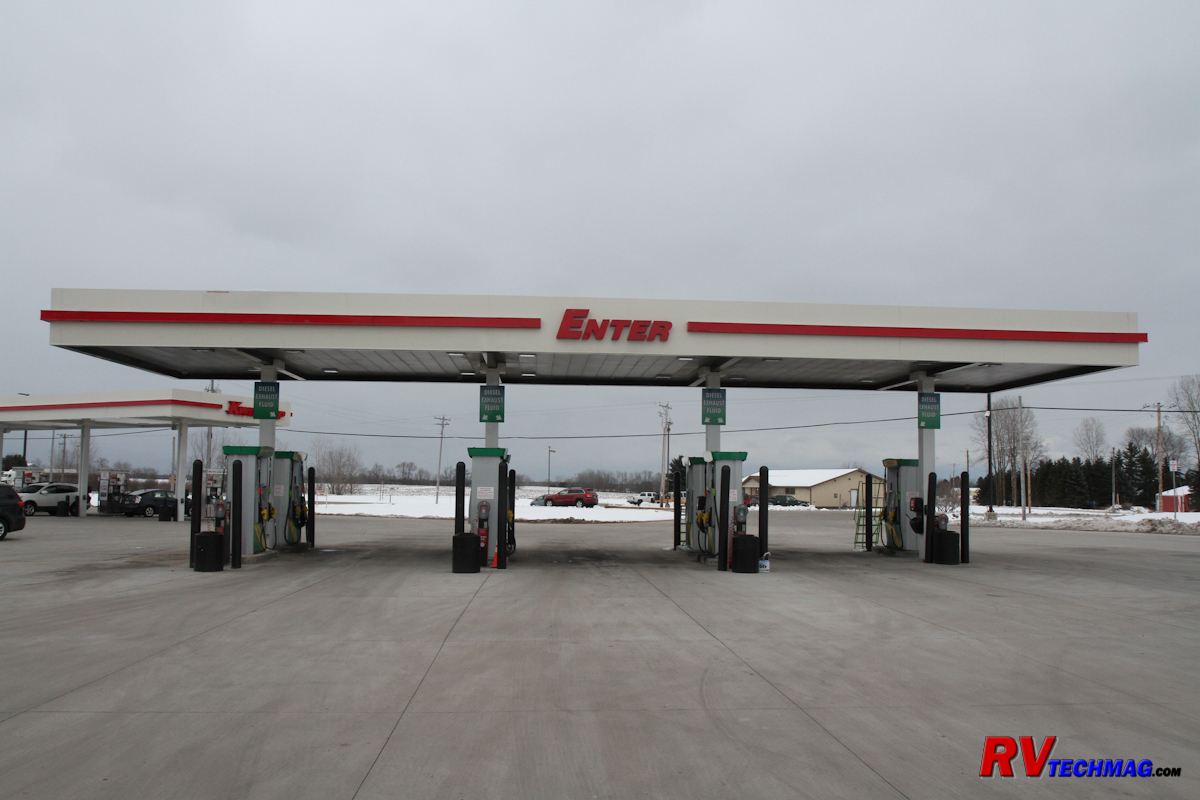
Many truck stop fuel islands are equipped with DEF pumps to provide easy access to DEF when refueling.
|
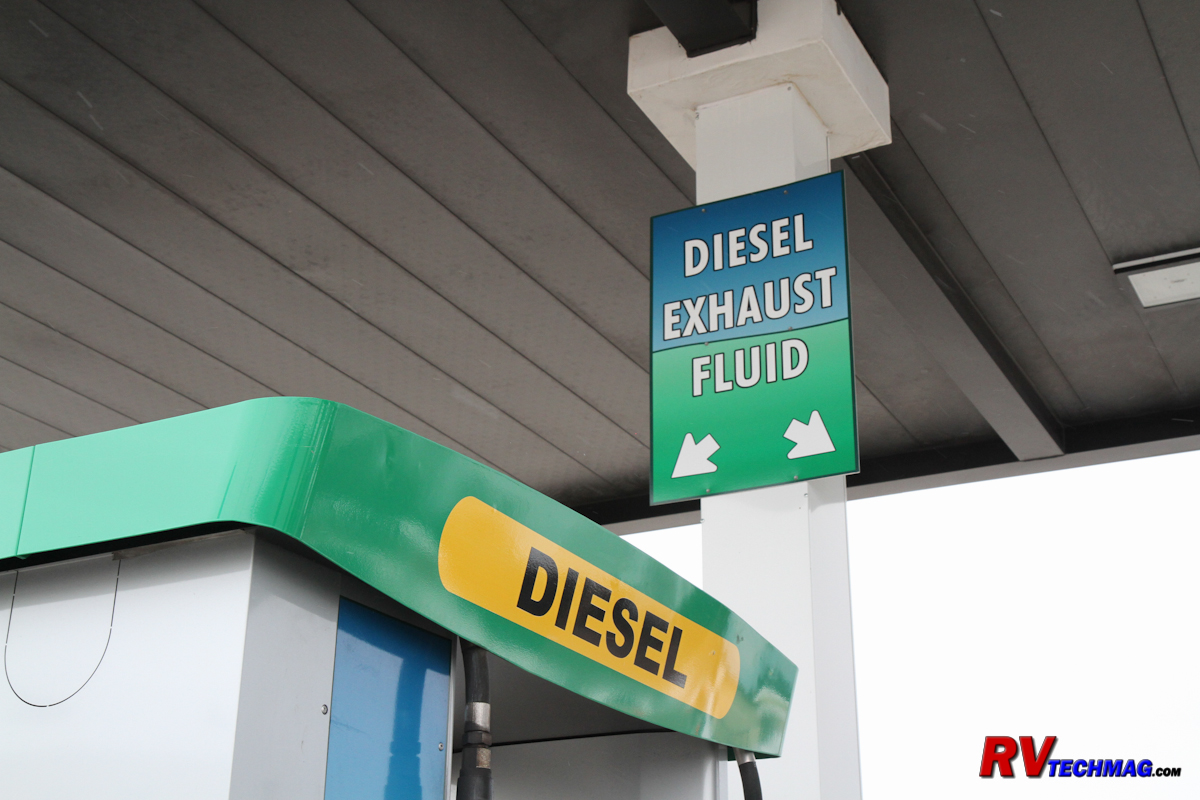
Diesel fuel islands equipped with DEF pumps generally incorporate overhead signage indicating where DEF pumps are located.
|
Handling DEF doesn't take an engineering degree or a hazmat suit but there are a few things to keep in mind. DEF can be purchased in
2.5 gallon containers at auto parts stores or large retailers, such as Wal-Mart. DEF is also dispensed from dedicated DEF pumps at most major truck stops.
The DEF nozzle is kept behind a magnetic flap in a heated compartment right alongside the diesel fuel pump to prevent freezing during cold temperatures.
Most truck stop fuel islands will have overhead signage that indicates which lanes have pump DEF available.
DEF does have the potential to evaporate. After all it is 67.5% water but field tests have found this is not a significant concern
as long as the DEF tank is securely closed. DEF does have a shelf life or 2 years and this will be reduced if the DEF is exposed to direct sunlight or if
the temperature remains above 85 degrees Fahrenheit for sustained periods. DEF packaging will have an expiration date so keep that in mind if you plan on
stocking up on DEF. In an ideal world your DEF should be stored where temperatures do not drop below freezing or exceed 85 degrees and will be consumed
within one year.
|
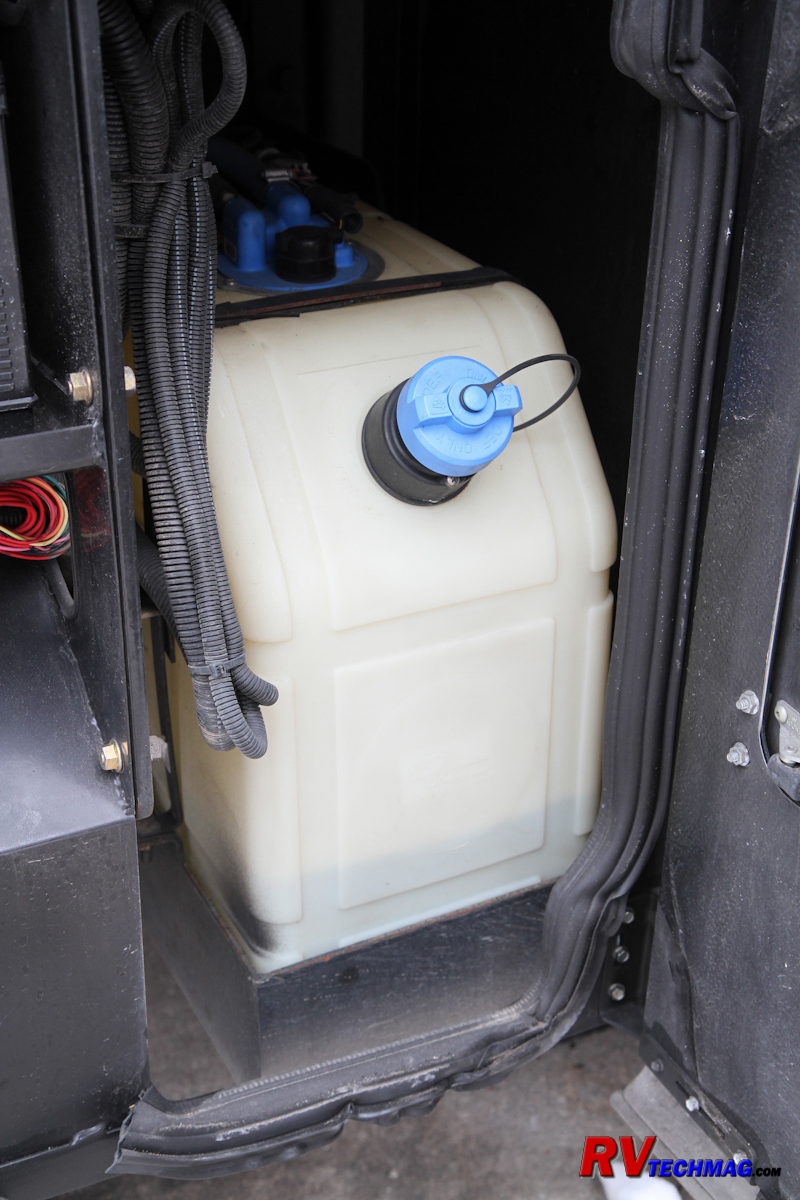
DEF tanks are need to be located close to the engine due to limits on the length of hose bnetween the tank and dosing valve.
|
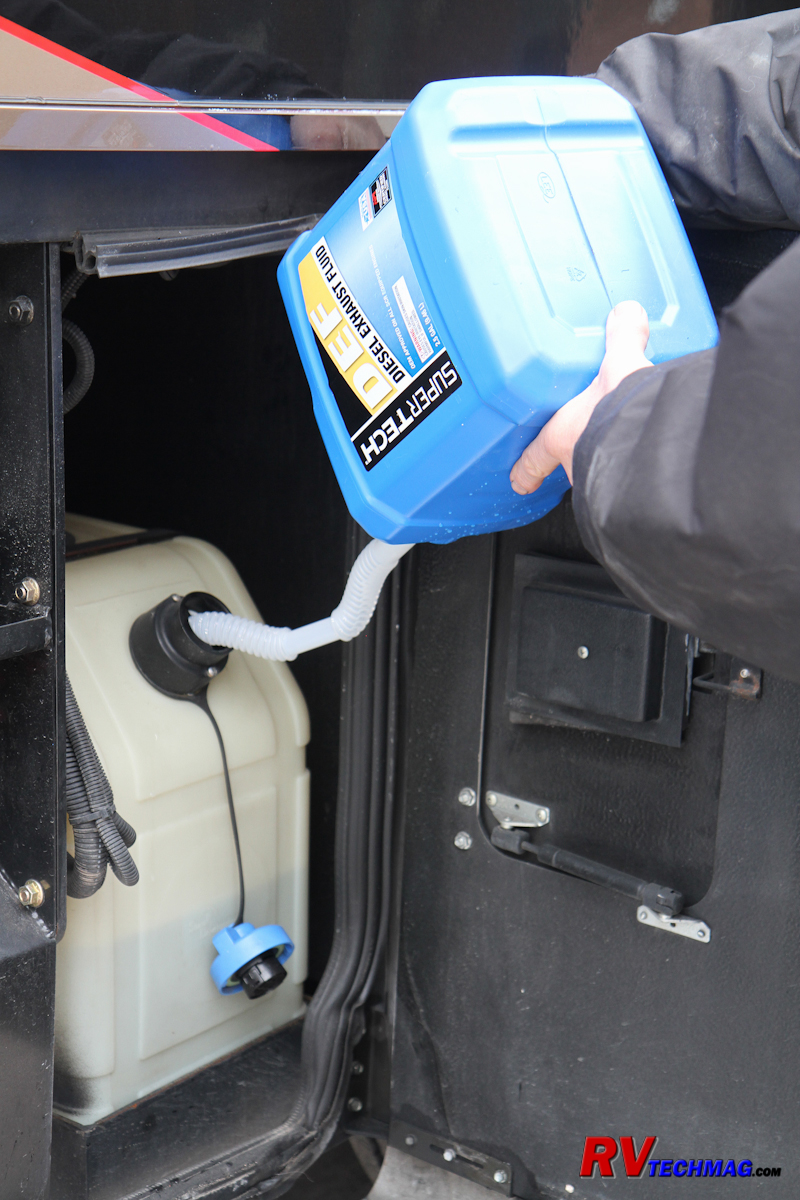
DEF tanks can be filled with 2.5 gallon jugs as well as by fuel island DEF pumps.
|
|
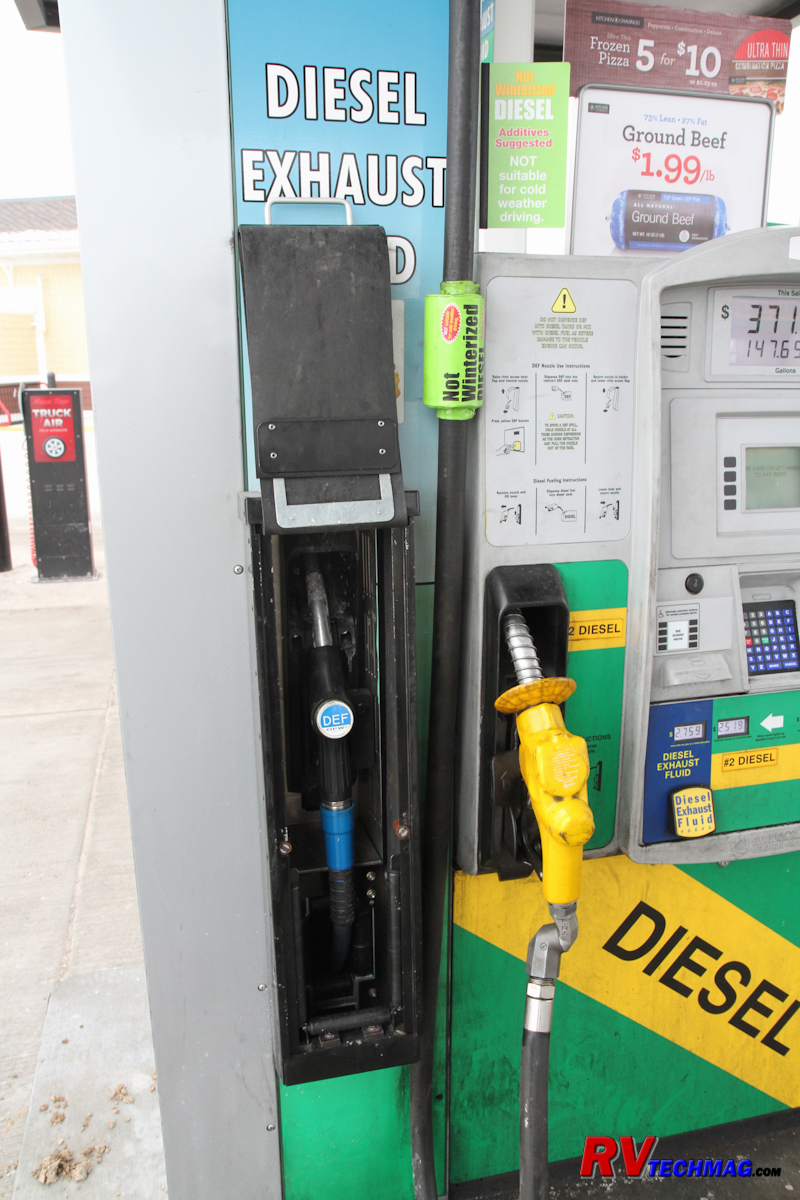
DEF pump nozzles are located next to the diesel fuel pump nozzles. DEF is never pumped through the asme nozzle as the diesel fuel.
|
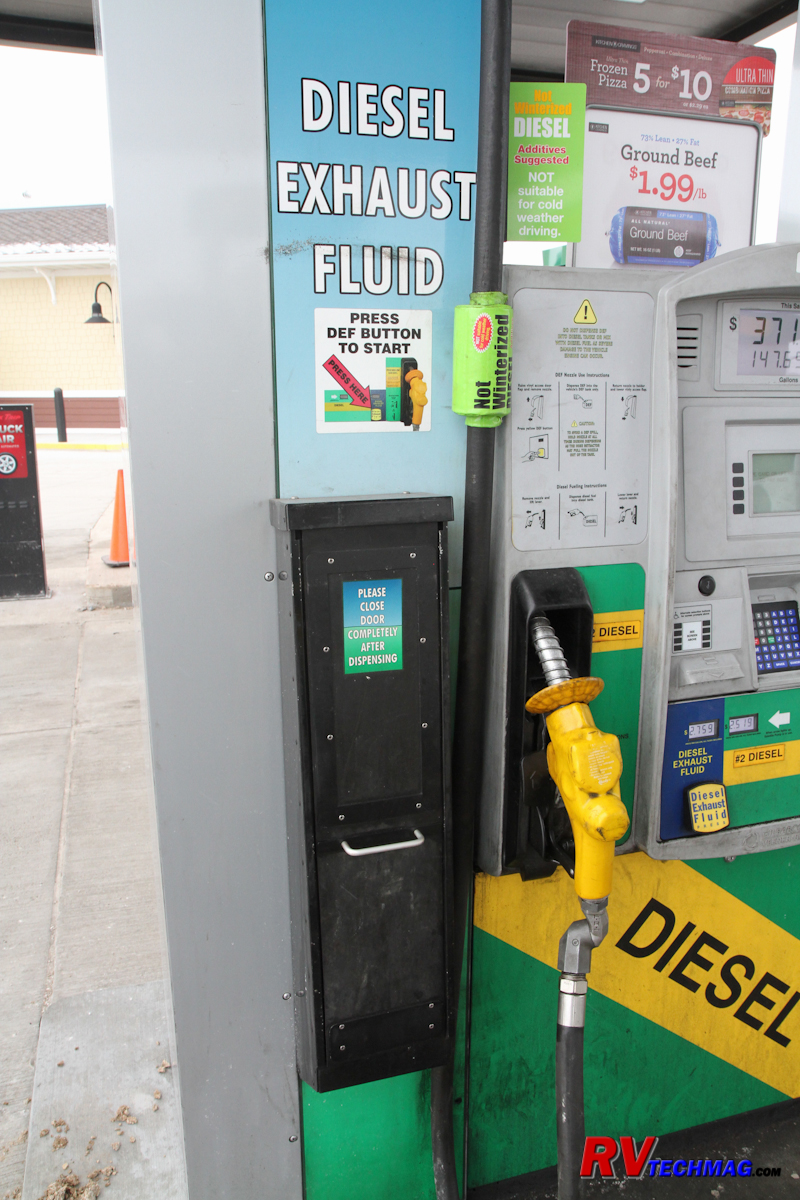
DEF pump nozzles are stored in a heated compartment with a flexible magnetic cover.
|
DEF is always stored in its own dedicated tank and should never be put into a diesel fuel tank, nor should diesel fuel ever be put
into a DEF tank. If you put diesel fuel into the DEF tank it will damage the SCR system and you will have an expensive repair bill. If you do put fuel into
the DEF tank do not start the engine. You will need to call a service center and have them remove the diesel fuel from the tank before moving the coach.
Diesel fuel is lighter than DEF and will float to the top as long as you don't stir it up by starting the engine. Once you get the tanks cleaned out you can
refill with fresh DEF and start the engine. There are a few safeguards in place to help prevent this. Truck pump diesel fuel nozzles are 0.87" (22mm) in
diameter, which is larger than DEF fuel nozzles, which are 0.75" (19mm) in diameter so it would be extremely difficult to put the diesel fuel nozzle into a
DEF tank. DEF tank caps are also blue in color and are labeled to help identify them as DEF caps.
It is possible to insert the smaller DEF nozzle into a diesel fuel tank filler neck. Once again, do not start the engine. DEF
contains 67.5% water and will wreak havoc on your fuel injection system and can explode fuel injector tips. You'll need to have the fuel tank purged of
DEF before continuing. Some bulk DEF pumps have a magnetic switch located in the nozzle. This safety switch will the presence of a magnetic ring in the DEF
tank's filler neck and will prevent the flow of DEF if it does not sense the magnet. But not every DEF pump nozzle has those magnetic safety switches so
you do need to be careful in which tank you are putting your DEF and to choose the correct nozzle. This may also affect your ability to refill plastic
2.5 gallon jugs with pump DEF. The plastic jugs don't have a magnetic neck so any pump DEF nozzle equipped with a magnetic safety switch won't turn on
and allow any DEF to flow. You can use an adaptor device, such as a Magnevator, which slips over the pump's nozzle to allow flow if you choose to refill
your plastic jugs.
|
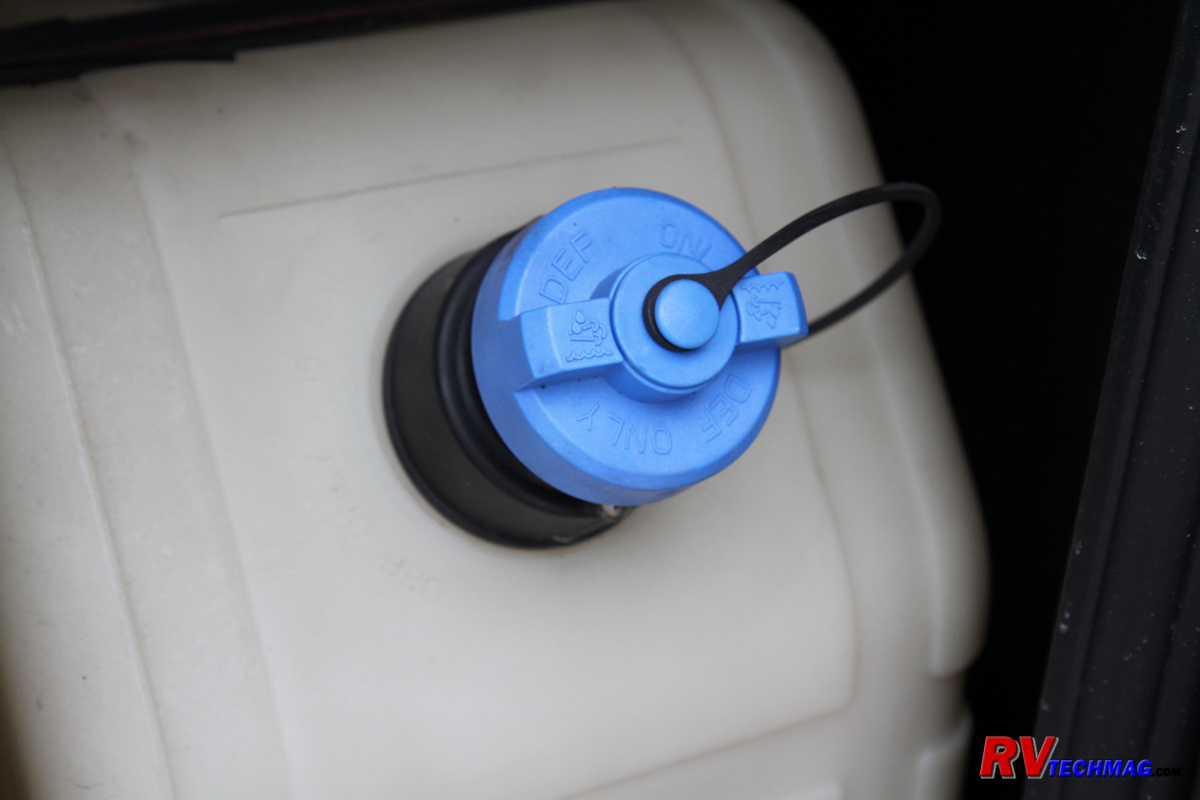
DEF tank filler caps are blue in color, are labelled for DEF-only use aqnd include a magnetic ring to activate DEF pnmp nozzles.
|
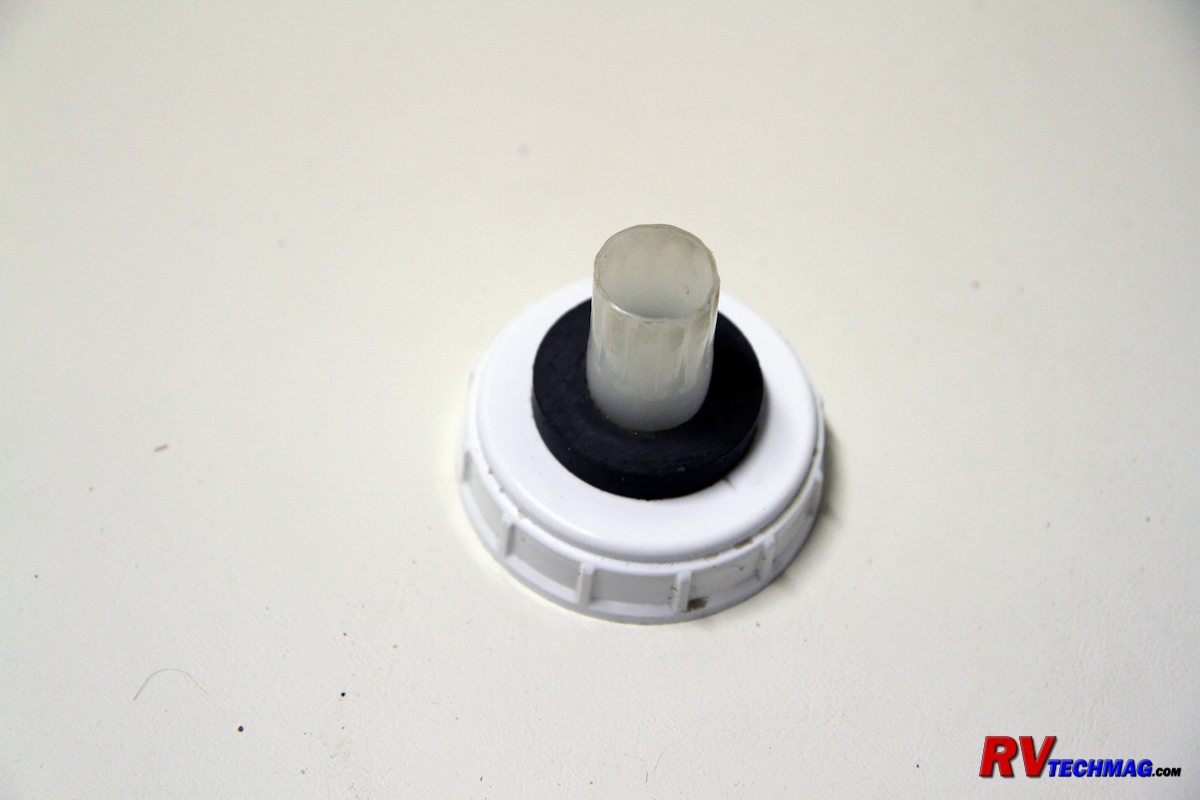
A Magnevator adaptor can slip over the DEF pump nozzle and is equipped with a ring magnet to activate the
pump nozzle when used to refill portable jugs that have no magnetic filler neck.
|
DEF isn't hazardous to handle but it can stain clothes if you spill any on your clothing. If you do spill DEF on your clothes just
wash it away with water. If you spill any on the ground just wipe it up with a paper towel or rinse with water. Any residue that remains will turn into
crystals, which will also wash away with water. DEF is corrosive to carbon steel, copper and aluminum so its best to rinse any spills there with water as
well to prevent corrosion.
Return to Home Page
If you enjoyed this article be sure to recommend RVtechMag.com to your friends, like us on Facebook or Twitter
or subscribe to our RSS feed.



|














